
This logo isn't an ad or affiliate link. It's an organization that shares in our mission, and empowered the authors to share their insights in Byte form.
Rumie vets Bytes for compliance with our
Standards.
The organization is responsible for the completeness and reliability of the content.
Learn more
about how Rumie works with partners.
Are you feeling like no progress gets made after spending hours in seemingly endless meetings?
Or maybe you participated in a productive meeting only to forget everything that was discussed the second you walk out the door or end the call?
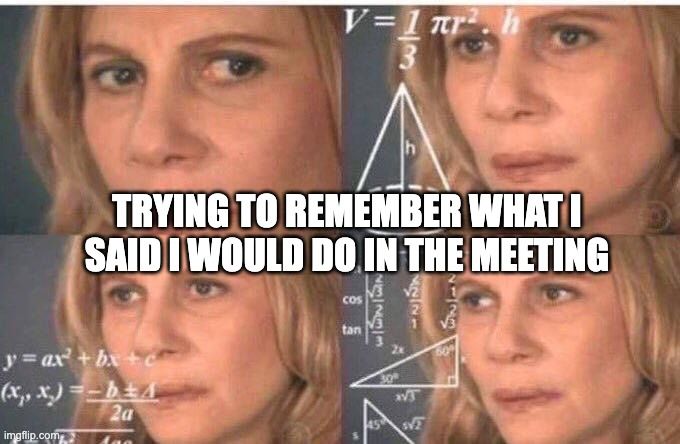
If you've ever found yourself in this situation, use one of thesenote-taking methodsto get organized in your next meeting:
Quadrant Method
Cornell Method
Outline Method

Meeting Minutes vs. Meeting Notes
Meeting minutes are actually different than meeting notes.
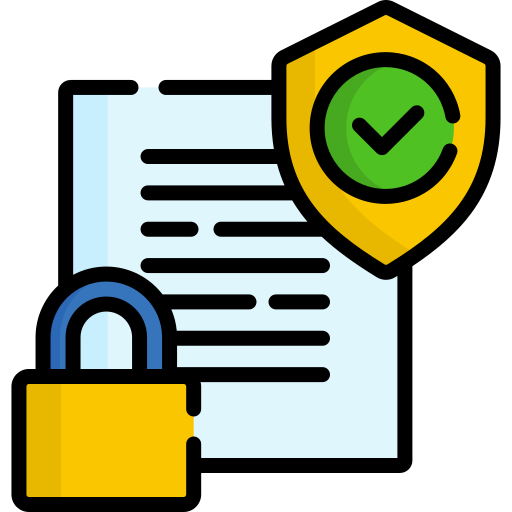
Meeting Minutes
Meeting minutes are a formal written record and typically include information like:
Start and end time of the meeting
Names of people present and absent from the meeting
Decisions made and actions that take place during the meeting
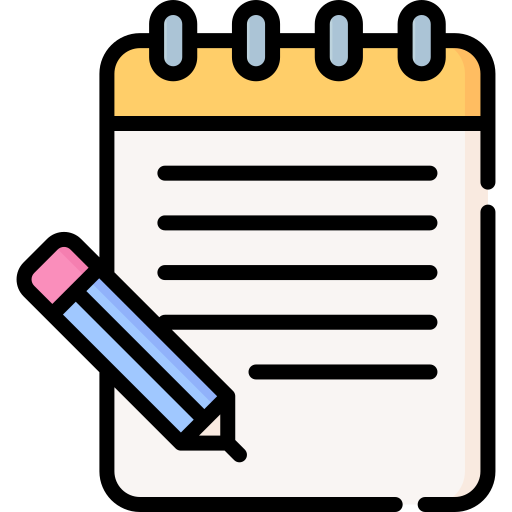
Meeting Notes
Meetings notes are quick references to:
Goals
Ideas
Action items
Other important topics discussed
Tip💡
You can still take your own meeting notes even if someone is recording meeting minutes. These 3 note-taking methods can help you document and recall your takeaways in any type of meeting.
1. The Quadrant Method
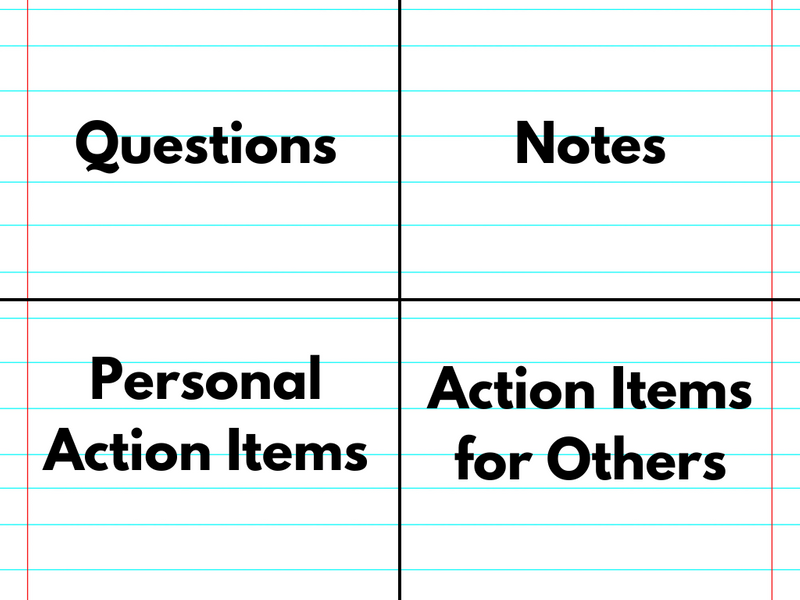 Image authored by Erin Ferris
Image authored by Erin Ferris
The Quadrant Method organizes your notes according to 4 categories. The method can be used for personal or shared team notes.

Set It Up
Separate your paper into 4 quadrants:
Questions (Top Left): Note questions that need to be answered in the meeting. Include other important questions asked/answered here too.
General Notes (Top Right): Write key points and critical details.
Personal Action Items (Bottom Left): Use this section as a personal to-do list for tasks discussed.
Action Items for Others (Bottom Right): List the tasks assigned to other meeting attendees.
2. The Cornell Method
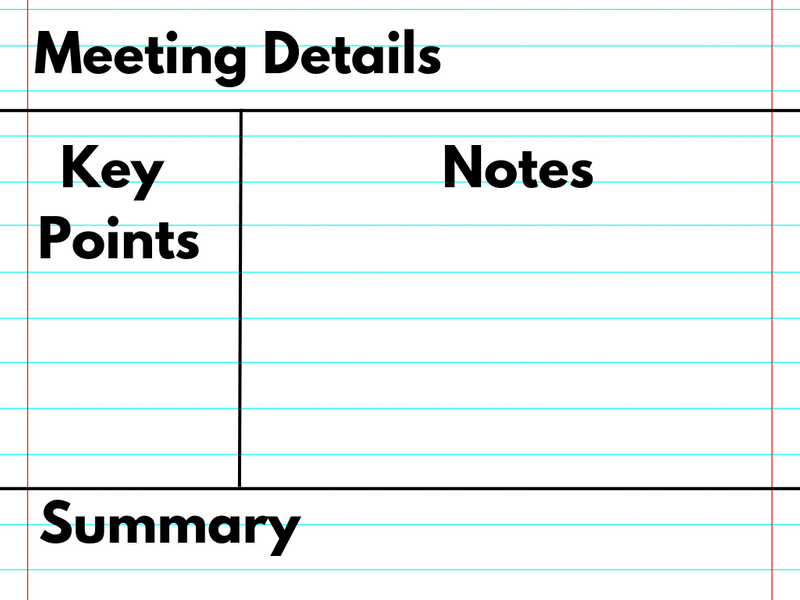 Image authored by Erin Ferris
Image authored by Erin Ferris
The Cornell Method mirrors your notes to the overall meeting structure.
Think about the flow of a typical meeting:
Someone shares a key idea or asks a question.
Relevant details are discussed.
The conversation then shifts to the next topic or question and the cycle continues.
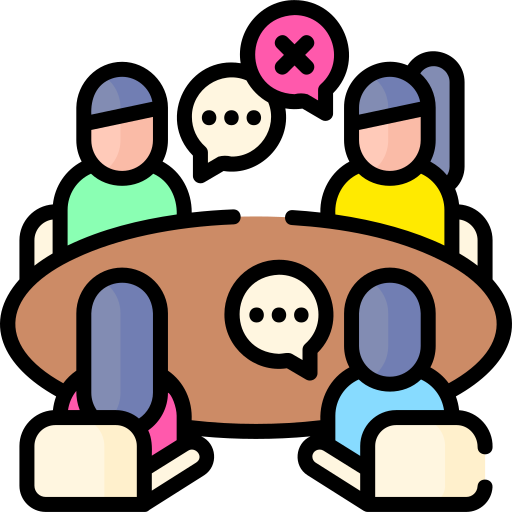
Set It Up
Meeting Details Section: Use the meeting name and date as your header.
Separate your paper into 2 columns: a small column on the left and a large column on the right.
Left Section (Key Points): Include keywords and big ideas.
Right Section (Notes): Use the right side to capture the details of keywords listed on the left side.
Summary Section: Summarize the topic(s) discussed.
Quiz
Suzie is using the Cornell Method to record the team meeting notes. Her colleague pitches a new initiative to help boost customer satisfaction. Where should she list the timelines discussed for implementing the initiative?
Include more specific questions, details, and finer points in the Notes section. While Suzie can list the new initiative in the Key Points section, she should include any timeline details next to it in the Notes section.
Did you know?
You can also use the left column as a "cue" section for action items. Check out this Byte for more details.
3. The Outline Method
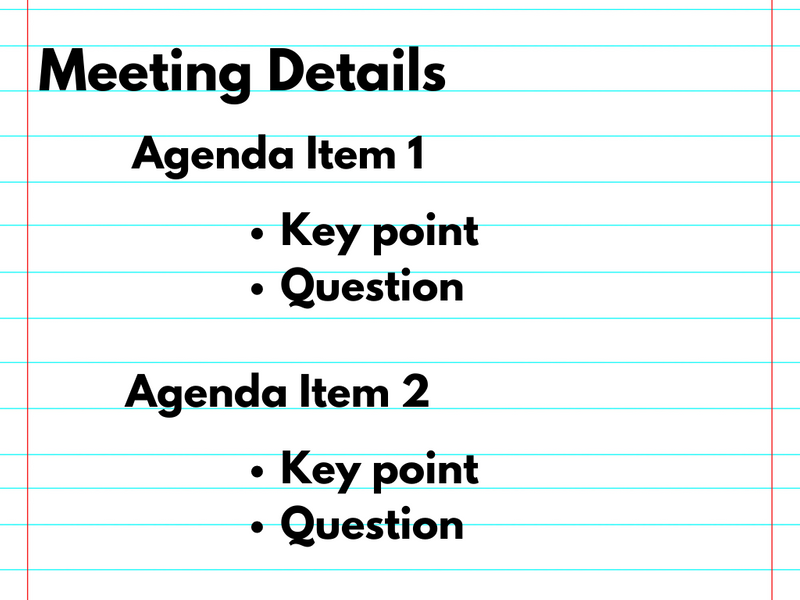 Image authored by Erin Ferris
Image authored by Erin Ferris
The Outline Method works best when your meeting follows a clear agenda.
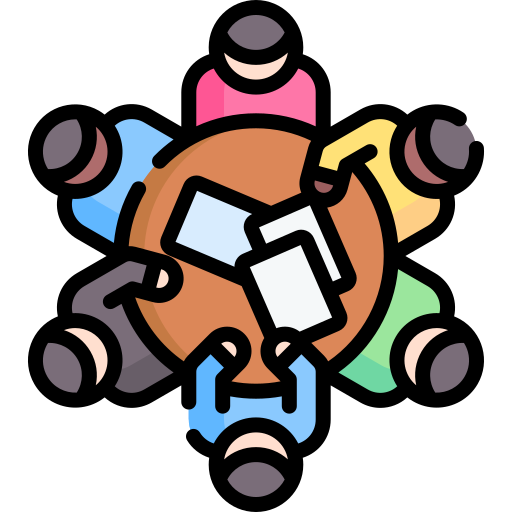
Set It Up
Meeting Details Section: Use the meeting name and date as your header.
Agenda Items 1 and 2: Use each agenda point as a section heading for your notes.
Key point and question: List key points and questions discussed and raised under their corresponding agenda heading.
Tip 💡
Use indented bullet points to list sub-topics and related questions.
Take Action
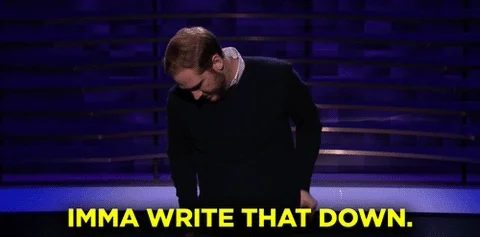
This Byte has been authored by
Erin Ferris
Learning Experience Designer